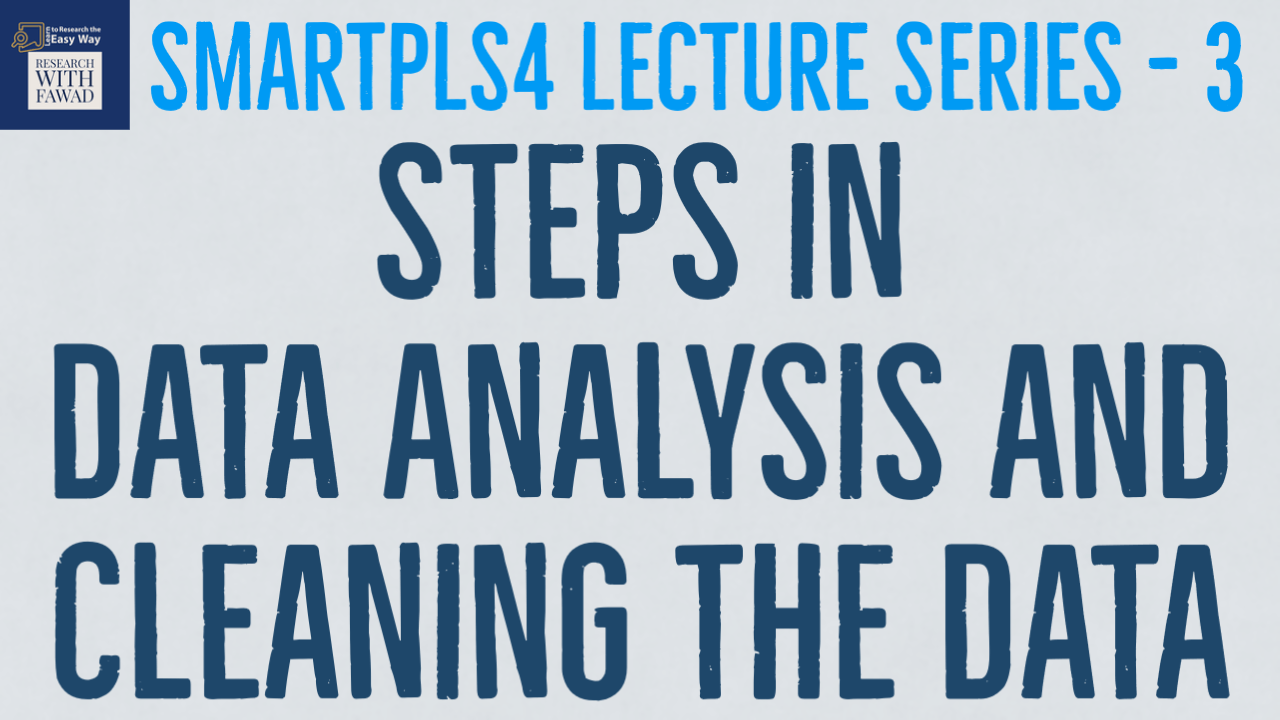Steps in Data Analysis - SmartPLS4 Series
Learn the steps in Data Analysis when using Structural Equation Modelling.

The Process of Data Analysis
The focus of the session is to help scholars learn the basic and advance techniques in Data Analysis when using SmartPLS4.
Click Here to visit the Complete Playlist
Steps in Data Analysis
The first stage in a data analysis process using SmartPLS is data cleaning, focused on handling missing values, outliers, and data quality concerns through respondent misconduct to ensure a valid dataset. The next step is Measurement Model Assessment, which involves assessing the quality of the measurement indicators in capturing the underlying constructs. Examining factor loadings, reliability using metrics such as Cronbach’s alpha and composite reliability, and validating the constructs using convergent and discriminant validity tests.
The Structural Model Assessment is the next step following the measurement model assessment. In this step, the links between latent constructs are assessed. The relationship is assessed via bootstrapping, to determine path coefficients, t-statistics, and p-values. A t-value more than 1.96 and a p-value less than 0.05 usually imply statistically significant results. Finally, you assess your structural model’s explanatory strength (R-square) and predictive ability (PLS-Predict) for making out-of-sample predictions.
Following are the steps to follow for data analysis using SmartPLS4
- Clean your data
- Measurement Model Assessment
- Factor Loading
- Reliability (Alpha and Composite Reliability)
- Validity
- Convergent Validity (AVE)
- Discriminant Validity (Fornell & Larcker Criterion, HTMT (Preferred), or Cross Loadings)
- Report Measurement Model
- Structural Model Assessment
- Check for Collinearity
- Assess and Report Significance of Relationships (through Bootstrapping)
- Check for Bootstrapped Path Coefficients, T Statistics, P Values
- A T value over 1.96 (two tailed) and p value < .05 mean significant results and the (alternate) hypothesis is substantiated.
- Assess the Explanatory (R-Square) and Predictive Power (PLS-Predict)
Also read Tutorials on SmartPLS4
Videos for Each Step in Data Analysis
Step by Step Approach to Data Analysis using Structural Equation Modelling (See Description). The short session guides on the steps for data analysis when using Structural Equation Modelling.
What is SEM?
https://youtu.be/H0d5LZ9Bs64
https://youtu.be/15hxvI2bSJgData Cleaning
https://youtu.be/dZdIiEsgHWE
To Learn more about SmartPLS4, Click Here
Video
Additional Literature Review Resources
- A Practical Example of Writing and Formatting the Literature Review
- From Literature to Research Problem, Objectives and Questions
- How to Avoid Plagiarism?
- How to Develop relationship between variables using a theory?
- How to Use Google Scholar for Literature Review
- How to Use QDA Miner Lite for Searching Literature
- How to Use Scholarcy and Google Tall to Books to Extract Literature
- How to Write the Literature Review
- Theoretical vs Conceptual Framework – Different, Similar, or Complimentary
- Using Mendeley for Literature Search